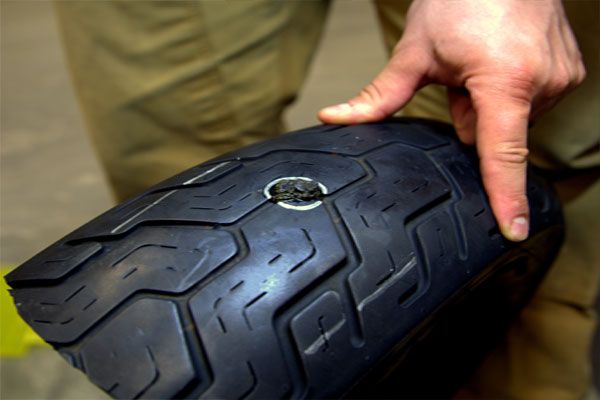I'd like to learn to do hot repairs to tires. For old bias ply type tires and farm equipment. Any chance one of you would happen to know some about this?
"Hot patches" are a thing of the past. Both the Tire Industry Association and the Rubber Manufacturers Association specifically say "hot patching" tires should not be done. All you're doing is burning away the vulcanizing cement which does the job of chemically bonding your patch to the tire.
That being said, back in the day before I knew any better, we would hot patch as follows:
Demount tire
Remove road debris or whatever punctured the tire
Ream out the hole with a carbide drill bit and a drill operating @ low rpm
Treat inner liner of the tire with rubber prep or buffing lube around the area to be patched/ plugged
Rake the area to remove the inner case liner ( kinda a waxy coating that helps keep air from permiating out)
Insert plug and trim flush with tire ( this is if using a 2 piece patch/plug)
Using buffing wheel buff inner case liner and plug until the rubber has a velvet like feel
Vacuum out all rubber dust from the drilling and buffing
Apply vulcanizing cement
. ........this is when we would light the cement on fire....
After a few seconds blow out the flame
Apply patch
Use a roller to press the patch on
Coat the whole thing with repair sealant
Last edited:
These days we skip the part when you light the cement and instead let the cement sit for a few minutes and dry until it has a dull hazy appearance. Then apply the patch.
Key thing is to scrape away all the case liner and buff the tire down til its like velvet. Be careful not to go down too far and expose the belts. If you buff it down just right the vulcanizing cement does just that.....vulcanizes your patch to the tire. Its not glue. It chemically bonds the surfaces
Its not glue. It chemically bonds the surfaces
Last edited:
No No, I mean like putting rubber back in where rubber once was. Think holes, not punctures. Besides my tires don't take patch cement. I've tried buffing, sanding, scraping. Cleaning with brake cleaner, alcohol etc. The patch just peels off.
I've taken to patching the tube, and using pull through tire plug / patch combo with black rtv to seal the tire.
I want to be able to repair tractor tire side walls.
Any and all sidewall repairs I've done or seen done where total jerry rigs.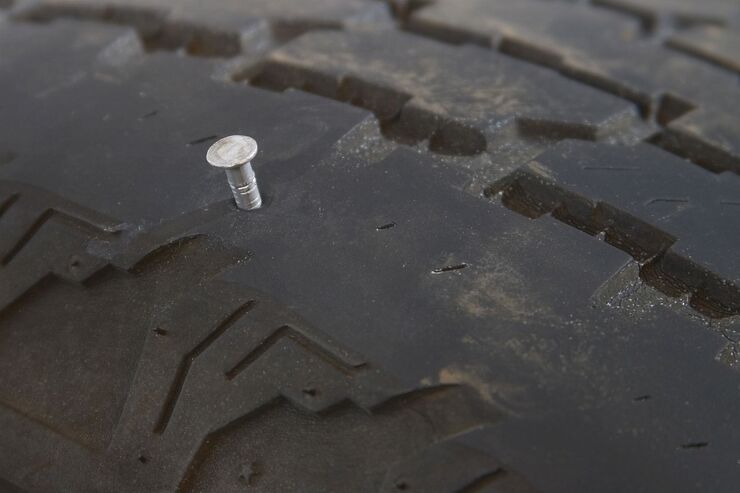 Just enough to send someone limping down the road with no guarantee it was gonna hold. If there is a chunk out of a tire and the belts have become visible I wouldn't do anything but replace it. Have you seen a tire have a zipper rupture in the sidewall?
Just enough to send someone limping down the road with no guarantee it was gonna hold. If there is a chunk out of a tire and the belts have become visible I wouldn't do anything but replace it. Have you seen a tire have a zipper rupture in the sidewall?
I have. The debris will literally tear off a limb....
I too have had trouble getting patches to stick. Usually only on riding mower or other small tires where you can't do much buffing. In those cases I just put a tube in them. As long as there is some meat left in the tread.
What's this for? If its not driven on the road or at speed and its just something you tool around on your property with then put a fresh tube in it. Even if its a "tubeless" tire.
Actually, the hot patch process is where you buy these special patches with some kind of flammable stuff on one side of it and you use a specially made press that will fit the patch (all patches I've ever seen were diamond shaped). You put the patch on the tube, clamp it in the press, and set it on fire. When it cools off you're done and no vulcanizing cement is used. It's a old process that was used before they came out with vulcanizing cement.
You put the patch on the tube, clamp it in the press, and set it on fire. When it cools off you're done and no vulcanizing cement is used. It's a old process that was used before they came out with vulcanizing cement.
I haven't seen any of these hot patches in years and don't even know if they are still available but the process worked really well. I also don't think you can use it for anything but tubes because I don't know how you'd get the press to work with a tire. I've still got a old patch press and would use it if I could find some hot patches.
I'm not sure that vulcanizing large sections of tires is something you can do at a home shop. I know that there is a place in Nashville that will do vulcanizing repairs on tires if the repair section isn't too big. I took them a tractor tire that had about a 6" cut in the sidewall and they said it was too big to fix.
m16ty said:
Actually, the hot patch process is where you buy these special patches with some kind of flammable stuff on one side of it and you use a specially made press that will fit the patch (all patches I've ever seen were diamond shaped).
You put the patch on the tube, clamp it in the press, and set it on fire. ....
Click to expand...
Yup, used those many times on my bicycle and mower tubes back in the 70's. Good lord I'm old!
It was a cardboard like stuff in metal that burnt slowly. It worked well.
Setting fire to cement is certainly bad, it isn't hot patching. In hot patching, the patch is vulcanized or changed from a gummy rubber to a cured, harder rubber. Think bubble gum for unvulcanized rubber.
Tire shops had electric patch heaters but self contained slow match type heaters were produced, these used potassium nitrate infused carbon or cotton in a metal iron to clamp the patch down to the tire/tube. The heater would have correct temperature time constant to properly vulcanize the patch.
modern chemistry has made these unnecessary, synthetic cements work just as well.
Ditching a newly bought tire that acquired sidewall damage sounds like a complete waste of money if you get a replacement. Is fixing a damaged sidewall the best idea? Can you patch a hole in the sidewall of a tire?
In today’s modern age, anything is possible. Yes, you can patch a minor hole in the tire’s sidewall using a plug kit and a rubber cement that comes with it. However, enthusiast drivers and tire experts do not recommend it for safety reasons.
The Tire Industry Association expresses that you must not repair any damage on the tire’s sidewall. However, patching your sidewall may help you get to the nearest tire shop to get a replacement.
If you got stranded in an area where you cannot get a replacement tire and the hole is reparable, a quick fix kit will keep you moving.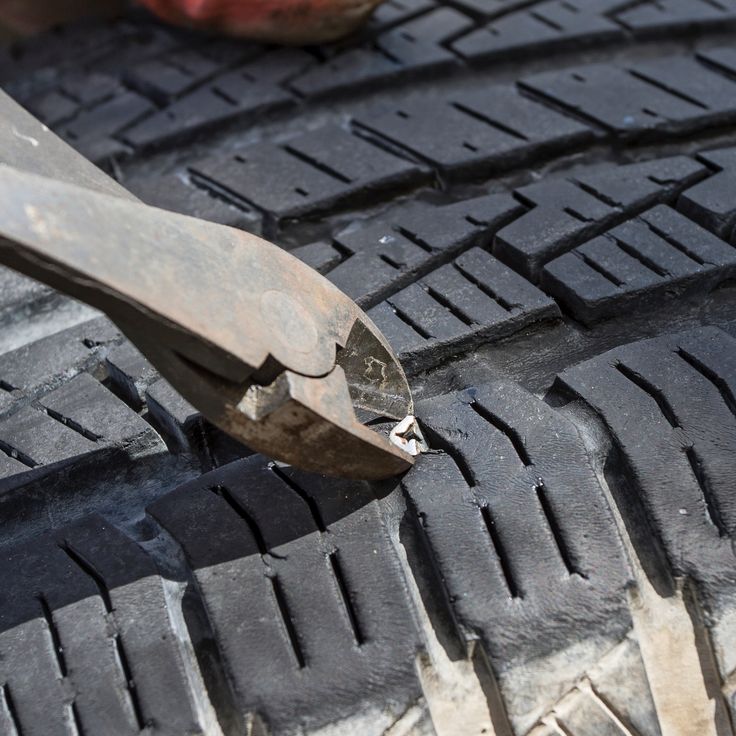
Read on to learn some information on how sidewall repair works.
Before further discussing how to repair a hole in the tire sidewall, let us first discover how a tire could get a puncture in this area.
Any sharp objects that press against your tire sidewall could potentially create damage or a hole. It could be a nail, a stone, broken glass, or any road debris.
I remember getting a hole on my tire sidewall one time when I drove across a construction site. A construction staple managed to bite the shoulder and the sidewall of my tire, creating a small hole.
Another potential culprit of a hole in the tire sidewall is road potholes. The amount of damage a road pothole could give your tires is beyond imaginable. So, avoid it as much as you can, or else you will end up replacing your tire, worse, your rim.
Potholes not only cause misalignment. There are sharp objects in them on some occasions, like a protruding steel bar, nail, screw, or sharp stone.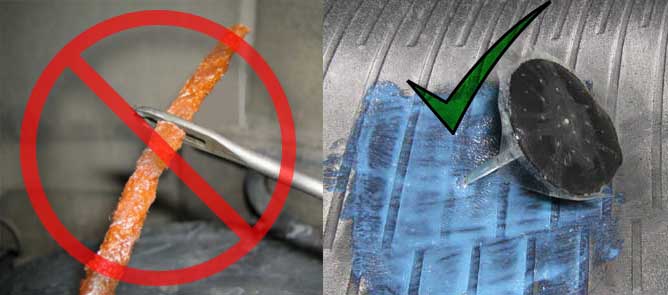 These objects could potentially puncture your tire’s sidewall.
These objects could potentially puncture your tire’s sidewall.
Another possible cause is vandalism. You could be living in a not-so-friendly neighborhood, or you might have gone to an area where people are not very accommodating. Although the chance of this happening is very slim, in reality, it still happens.
I once passed by a parked car where kids played with spare woods full of nails and tried to hammer them on the vehicle’s tire. That was not a very pleasant scenario for car owners.
Regardless of the reasons your tire can acquire a hole in the sidewall, what is extremely important is to be cautious all the time. Look at the road you are taking and park your vehicle at a safer place.
Also, read our view on outstanding highway tires from Michelin: Defender LTX M/S
At the beginning of this article, I used “minor hole” to emphasize that severe sidewall damage is beyond repair. Of course, you cannot fix sidewall holes all the time as it depends on how large it is.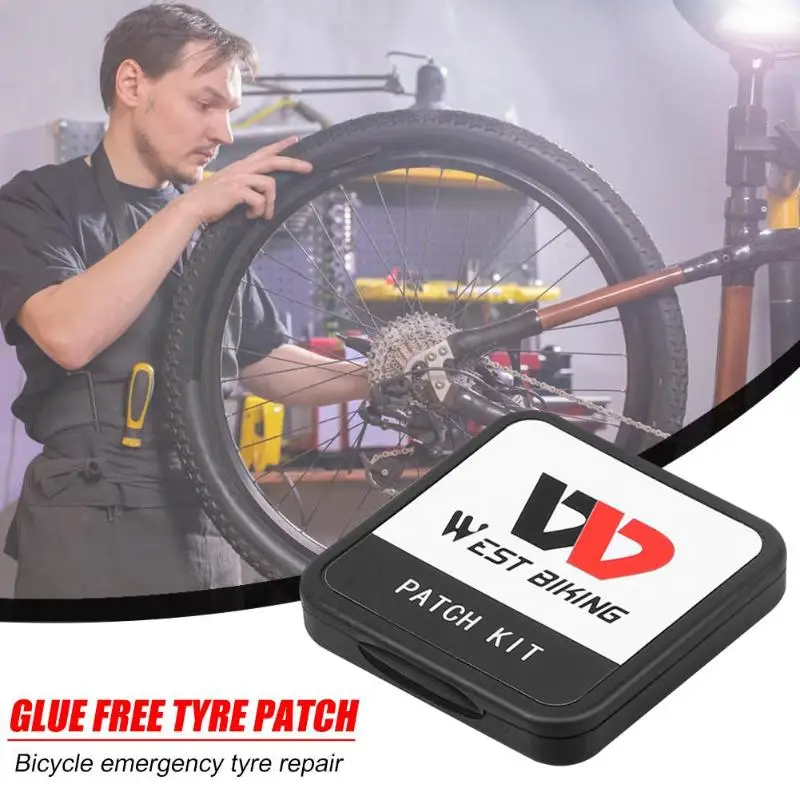 Generally, you can still remediate a puncture that is 1/4 inch or less.
Generally, you can still remediate a puncture that is 1/4 inch or less.
The most popular way to fix a hole in a tire sidewall is using rubber cement.
Rubber cement is an adhesive that is widely used in the tire industry to fix tire damages. You can purchase this from any auto shop or online store.
What is the application process?
First, you need to buy a tire plug kit from any auto parts store along with a tube of rubber cement. I would suggest you keep these in your trunk for emergency purposes. They can be the solution if you run into a bad day with your tire.
The next step is to check the puncture or the hole and ensure that you have removed the culprit completely. Removing the object would rapidly release the air from your tire, so you might need to do it fast and apply the plug quickly.
Then, apply the rubber cement into the puncture by using the available tool in the kit. You must have the complete application instruction when you purchase the kit.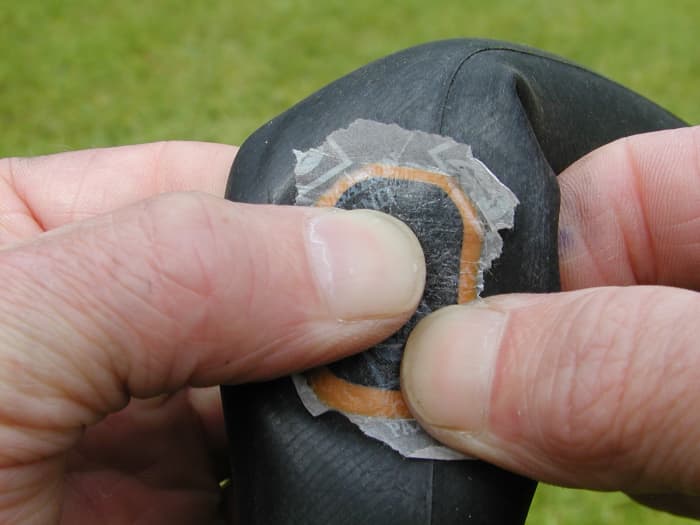
I will provide more detailed instructions on how to do this in the following section. The final goal is to completely seal the hole and block the air from popping out of the tire.
This YouTube video shows you how to repair sidewall damage easily. Of course, this video only intends to give you some ideas on how to do it. If you decide to do it, you do it at your own risk.
Let us talk more about the process of plugging the hole in your tire sidewall.
As mentioned earlier, plugging and using rubber cement could be the most convenient way to fix the hole in your tire’s sidewall. Let us take a closer look at the process of doing it.
Before you start, you need to ensure that you have the necessary tools to carry out the job. What are these tools? These are tools that you always have in your car trunk, including a car jack, pliers, wire cutters, and tire plugging kit.
What are these tools? These are tools that you always have in your car trunk, including a car jack, pliers, wire cutters, and tire plugging kit.
You must also have the required materials like the tire plug strips and the tire sealing cement.
Step 1: Considering that you already know where the hole is, you must first remove the object from the hole using your pliers.
Step 2: Using your T-handle reaming tool (which should be in the plug kit), roughen the inner surface of the hole. The process involves jamming it into the hole, working it up and down, and rotating it several times.
Step 3: Thread the plug strip into the eyelet of the insertion tool using your pliers until it protrudes equally on each side.
Step 4: Apply the tire sealing cement on the plug strip and the hole on the tire sidewall.
Step 5: Insert the cement-coated plug strip slowly into the hole. It might require some force to do it successfully. Press hard until the plug gets into the hole. You can carefully pull up the insertion tool when it has reached at least about an inch into the hole.
Press hard until the plug gets into the hole. You can carefully pull up the insertion tool when it has reached at least about an inch into the hole.
Step 6: Refill the tire with air to test it out. You can use water with sope to see if the air still pops out of the hole. If the air is still coming out of the tire, it indicates that you did not do it properly and might need some professional help or replace your tire.
Step 7: If no more leaks, cut out the plug strip and clean the area from the excess tire cement.
If you are the type of person who wants to see a demonstration, I looked up a video that would give you an example of how to do this. Examine the video below and see if it gives you an idea of how to perform this.
If you are not confident in doing the process above, you can always tap on someone who has done it before.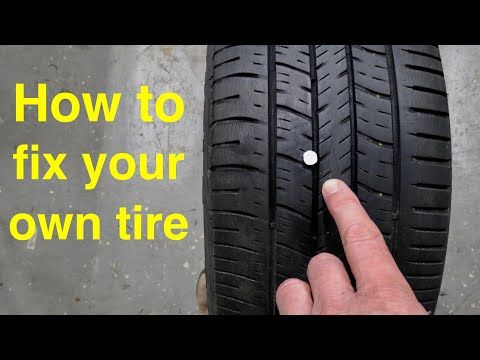 Alternatively, you can get the help of a mechanic who perfectly knows the process.
Alternatively, you can get the help of a mechanic who perfectly knows the process.
It is never safe to drive a tire that lost integrity because of damage like a hole in the sidewall. The sidewall of your tire plays a crucial role, and if its performance is compromised, it is dangerous.
Sometimes we think the damage is minimal and that the tire can survive with the help of a repair. Then, it is too late already when we experience the tire has failed in the middle of the road.
A tire with a repaired sidewall can still potentially blow up at any given time.
We’ve discussed using a plug kit and rubber cement to fix a hole on a tire sidewall. Yes, it may work occasionally, but the tire’s performance will never be the same. Knowing that your tire went through some repair, you will not be confident enough to load up your vehicle as the issue might reoccur.
In other words, you will not have peace of mind while driving because of the imminent danger that may happen any time while you roll on the road.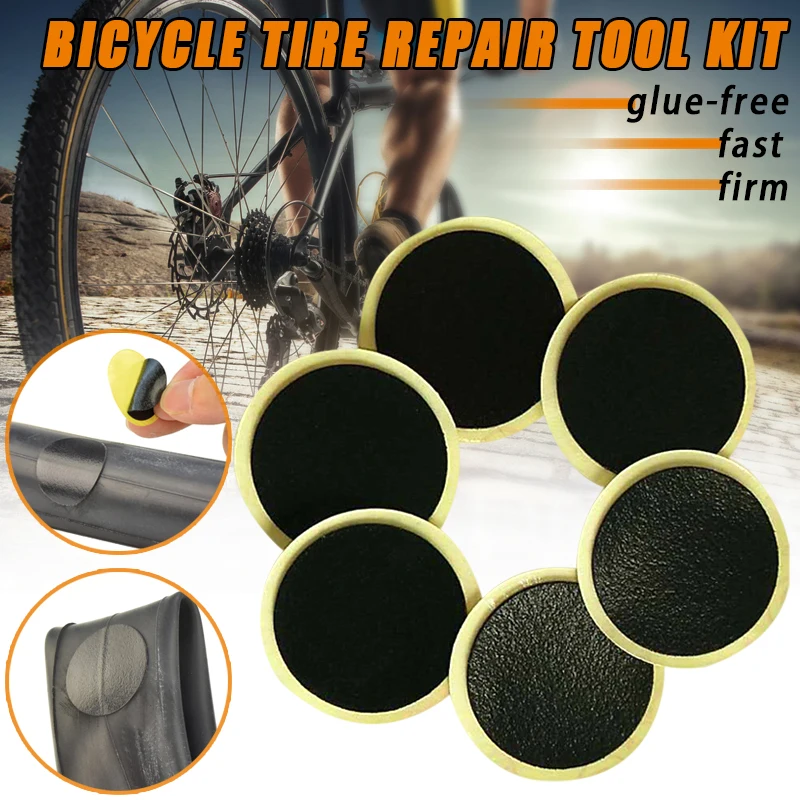
So, as I have been reiterating, a sidewall repair must only be temporary. You must only do it if you don’t have access to a new tire for a replacement. Never compromise your safety by settling with a repaired tire. Don’t be cheap with your life.
Patching a hole in the sidewall of a tire is not recommended for safety reasons. However, it can be a simple solution if you bump into a situation where you don’t have any other option, like being far from tire shops to buy a replacement.
The use of a plug kit and tire rubber cement is the most viable and convenient solution. However, it would be best if you acknowledged that this fix might not last long and guarantee your safety. The ideal thing to do is to replace the damaged tire.
Another season of changing shoes is approaching. And you may remember that on one of the tires after the last winter/summer there is a jamb - a small bump. I don’t want to run to the store for the sake of one new tire. We understand. Or maybe it looks even better if repaired?
I don’t want to run to the store for the sake of one new tire. We understand. Or maybe it looks even better if repaired?
Yes, not every wheel that has met with a nail, rebar sticking out of the ground or a sharp stone on the road is considered damaged. Everything, of course, depends on the scale of the damage and its location on the tire itself. Some are easily repaired, while others are simply impossible to do - the tire can only be sent to the trash.
A bulge on a wheel, referred to by drivers as a bump or bulge, is the most common tire sidewall defect. It appears due to a collision with an obstacle or after falling into a pit, more often at high speed. The threads of the sidewall carcass are easily damaged by impact, and the tire at this point can no longer hold the load and air pressure - swelling appears. A small bump sooner or later turns into a big one, and driving with such a defect is dangerous - the wheel can shoot at any moment. At high speed, this is fraught with loss of control, departure from the road and a rollover.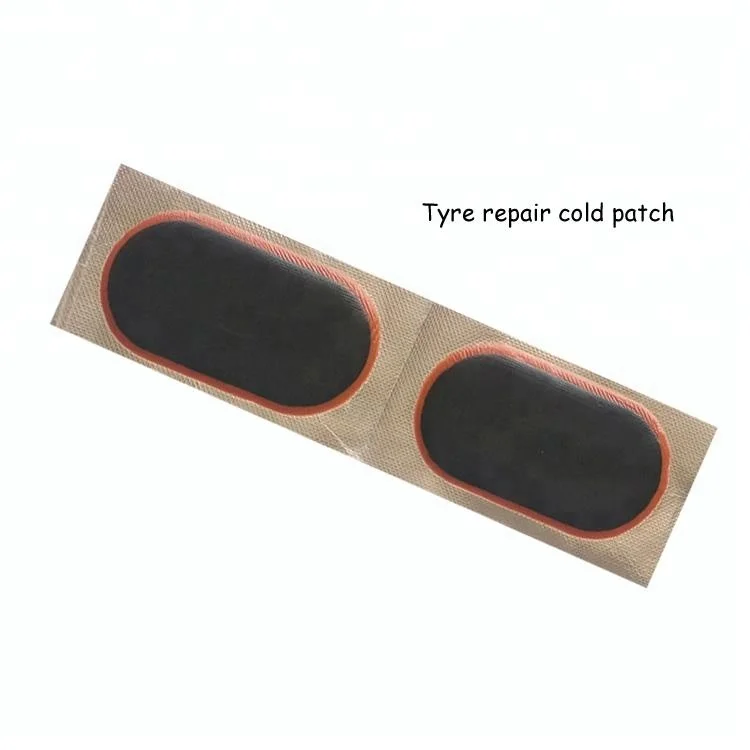
The quality of roads in Kazakhstan contributes to the appearance of bulges on tires
Some types of bulges are repairable, although this is a temporary measure. Not a single patch can restore the factory rigidity. Ideally, change the tire.
Special cord patches can extend the life of a tire with a herniation, even if the swelling has appeared on the tread. The sidewall is a different story. If the swelling appeared at a distance of more than 40 mm from the side, it can be repaired. If not, then the wheel needs to be replaced. Blisters on low profile tires are most often non-repairable.
For maximum safety when riding with a repaired bump, insert the tube. This is an inexpensive and reliable solution. On our market, you can find cameras made in China and Russia, the latter are slightly more expensive, but also of better quality.
The elimination of a side cut is a serious operation, therefore, as in the case of a bump, you will have to go to the professionals.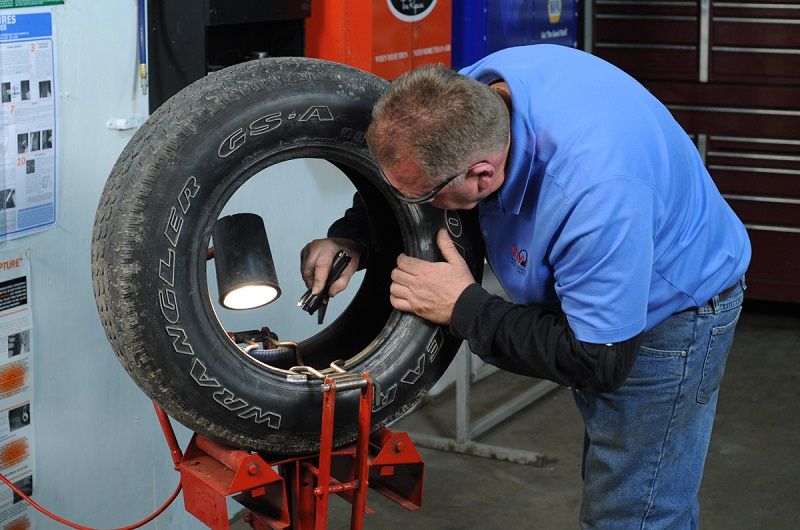 We need cord patches, fortunately in our time they are of different sizes and with a different number of layers. And if you do it wisely, then you can't do without special tools and vulcanization.
We need cord patches, fortunately in our time they are of different sizes and with a different number of layers. And if you do it wisely, then you can't do without special tools and vulcanization.
A cut, by the way, cannot be healed in all cases. If the gap is in the shoulder area of the tire, it is unlikely that anyone will undertake to repair it, since no guarantees can be given here. However, our Kulibins take on even the most difficult cases, cutting out parts of the sidewalls from the tires and even weaving the cord on their own.
Tire overhaul. We would not put such a wheel on ourselves
Low profile tires can be repaired, but more difficult. A tear in the sidewall is easier to seal on tires with a medium or high profile.
Sometimes a cut is confused with a pluck. This is when the outer layer of the sidewall caught on something sharp, a tear formed, but the frame itself remained intact. There is nothing wrong with that, although the drivers at the tire fitting company successfully repair the cut, for which they take it accordingly.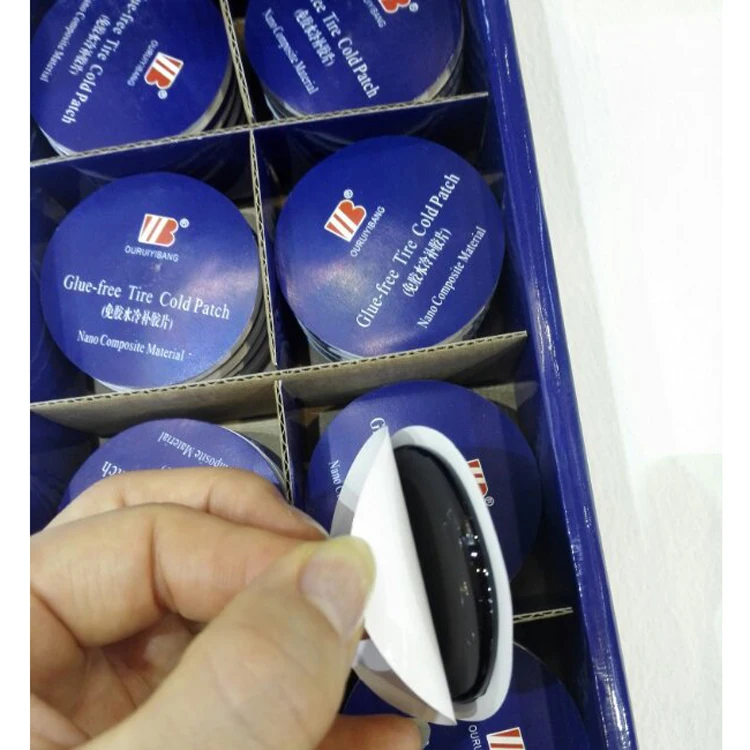
If a piece of rubber remains on the sidewall, then glue it with ordinary superglue (101st). If it came off, then it is better to cover it with raw rubber and vulcanize. Leaving the pluck bare is not recommended, because the tire carcass, often consisting of a metal cord, will quickly corrode.
In Europe, defective or used tires are perforated before being sent for scrap to prevent their resale and possible operation. But they don’t know that we have such holes on the sidewall patched once or twice
Cuts and hernias are not the only possible damage to the side of the tire. You can also spoil the side ring, in the process of changing shoes, for example. If it’s for garlic, then such a tire is already dangerous. Sooner or later, the tire pressure and the load in motion will start to squeeze the rubber off the rim - a wheel explosion can occur.
This ailment is repaired if the wire ring - the base - is intact. There are no special technologies and materials to correct this particular problem, but most often craftsmen use a two-component composition for chemical (also called cold) vulcanization. After mixing, the mass is pressed into a fat-free damage. Compound manufacturers recommend waiting 72 hours before mounting a tire. Of course, our masters do not pay attention to this condition - they put the tire right away. And it’s good if the wheel is flat because of this at night in the parking lot, and not on the road.
If the side ring tears are barely noticeable, but the wheel still deflates, then you can use a special liquid - a bead seal designed to seal a tubeless tire.
These seals have been used in motorsport for some time. In particular, in the American Formula D Drift Series, drivers used compounds to keep the tire on the rim even with minimal tire pressure. Now they are banned.
Pay attention to the left rear wheel of the Nissan Silvia S13. Due to too low pressure, it was literally taken off the disk under load
Every schoolchild has faced this problem when patching the inner tube of his bike after hitting something sharp. Repairing a car tire puncture with your own hands will also not be difficult even on the road. But for this you will need a pump (or compressor) and a universal tire repair kit with harnesses. All this is sold at any car market or gas station.
Repairing a car tire puncture with your own hands will also not be difficult even on the road. But for this you will need a pump (or compressor) and a universal tire repair kit with harnesses. All this is sold at any car market or gas station.
Repairing a tire on the side of the road with harnesses
The process is simple. If we are talking about the front wheels, then in most cases the wheel can not even be removed, it is enough to turn the steering wheel in the right direction, find the puncture site and carry out repairs. First, the hole is cleaned with a helical awl from the set. The tourniquet itself is smeared with glue and tucked into the eye of the awl, after which it is inserted into the tire hole. With a sharp movement, the tool is removed, and the tourniquet remains in place and clogs the hole. The tails are cut with a knife, but not at the root, it is recommended to leave about 20 mm. The tire is inflated and checked.
Sometimes a nail or self-tapping screw clogs the hole by itself, remaining in it.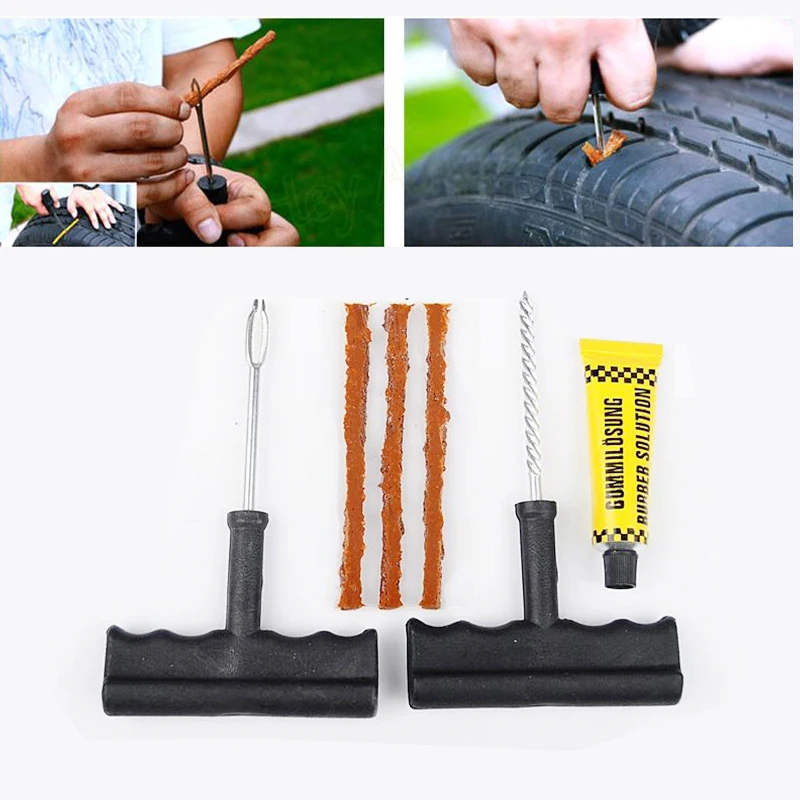 If you see a hat in a tread, do not rush to pull it out. While the pressure is holding, move to vulcanize. And sometimes they drive with a screw in a tire for weeks.
If you see a hat in a tread, do not rush to pull it out. While the pressure is holding, move to vulcanize. And sometimes they drive with a screw in a tire for weeks.
Repair of a puncture at a tire shop
Punctures are also repaired with harnesses at a specialized service, although among professionals such repairs are not considered long-term. After a few months, the flagella dry out and can let air through. There are more advanced methods like cold and hot vulcanization. The latter is more reliable. In this case, the hole is sealed with an elastic patch, and the funnel from a foreign object is filled with a special compound. After that, a vulcanizer is put on the tire, it heats up the rubber and solders it.
In addition to the plaster, the puncture is also repaired with special cord fungi. Craftsmen process the puncture site: drill it and treat the surface with a tool to roughen it. Then the repair area is lubricated with glue (it is also called cement) and a fungus is introduced.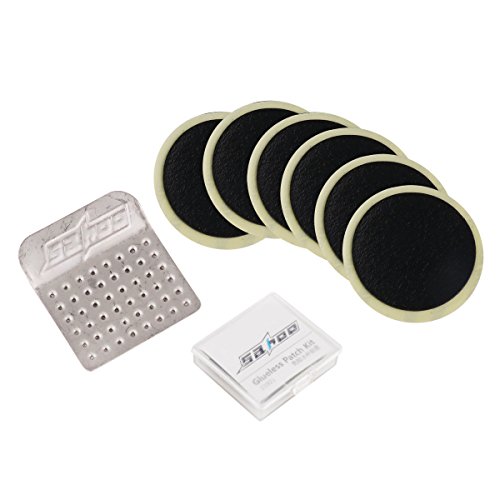 This is done from the inside of the tire. The cap of the fungus is rolled, and the excess legs are simply cut off from the outside.
This is done from the inside of the tire. The cap of the fungus is rolled, and the excess legs are simply cut off from the outside.
Puncture repair with sealant
With the advent of tubeless wheels, and later run flat tires, many automakers began to abandon spare wheels. Instead, repair kits with compressors are supplied with the machines. A repair kit is essentially a bottle of pressurized sealant. Later, such spray cans began to appear on the shelves of ordinary car dealerships.
This method has not taken root in the CIS, because the condition of the roads makes it necessary to have at least a stowaway in the kit, but it can also be considered as a method of repair on the road.
The car must be jacked up and sealant must be pumped into the damaged wheel through the nipple. Next, you should spin the wheel, then pump it up, lower the car and drive a few hundred meters. If the tire tightness has not been restored, repeat the procedure.
If the tire tightness has not been restored, repeat the procedure.
For commercial vehicles, cutting the tread with a special device (regrower) is a common thing. Moreover, such tire retreading is provided by the factory (marked REGROOVABLE on the sidewall) to increase the service life. But there are entrepreneurs who undertake to deepen the grooves in tires for passenger cars. But they are not intended for such an operation. Often used tires for sale are “refreshed” in this way. Be careful!
What is the threat?
The worst option is that the retreaded tire will shoot out on the road, as the master can damage the undertread layer when deepening the grooves. Such a tire will not be able to hold pressure at some point. There will be a boom! At best, the tire will indeed last a little longer, but is the game worth the candle? We think it's not worth it.
How is cutting done?
A regrower is used to cut the tread. Roughly speaking, this is a large soldering iron with interchangeable tips of various shapes. It goes through rubber like a knife through butter.
Roughly speaking, this is a large soldering iron with interchangeable tips of various shapes. It goes through rubber like a knife through butter.
If the tire is for passenger cars, then it is worth taking on a regrower only in one case - when part of the tread pattern was welded with "new" rubber during repair. This is where threading comes in handy in order to restore the grooves and symmetry of the tread.
Vehicle operation is prohibited if:
- tires have a residual tread height of less than 1.6 mm;
- tires have punctures, cuts, ruptures that expose the cord, as well as delamination of the carcass, delamination of the tread and sidewall;
- tires in size or load capacity do not match the car model;
- tires of various sizes, designs (radial, diagonal, chamber, tubeless), models, with different tread patterns, winter and summer, studded and non-studded, new and restored, are installed on one axle of the car;
- Tires retreaded according to the second repair class are installed on the front axle.
What is a second class repair?
This is the case when the carcass of the tire is restored after serious damage. A side cut (or tear) is a serious damage to the tire carcass.
Nowadays, tubeless tires are most often installed on passenger cars. They differ from chamber ones due to their low cost, lightness and ease of repair. However, they are pierced in the same way as chamber ones. Inside tubeless tires there is a special enveloping layer that significantly slows down the descent of the wheel in case of damage. If the puncture is small, then the tire can be sealed without removing it from the axle. This article will look at how to seal a tubeless tire in several ways.
Let's return to the methods of how to seal a hole in a tire. Some methods require special tools and some skills, while others, on the contrary, are not difficult. Therefore, how to seal the tire is up to you. However, the effectiveness of the repair to a greater extent depends on the size of the puncture - if the damage is extensive, then the tightness can be restored qualitatively only in a tire shop.
This is a fairly simple method that will help you quickly and cost-effectively seal the car camera. With correct and careful actions, a sealed tire is used for its intended purpose for 2-3 years (proven in practice). Typically, a repair kit kit includes two awls (one for cleaning the hole, the other for installing the harness), glue and special rubber bands for tire repair. The procedure is as follows:
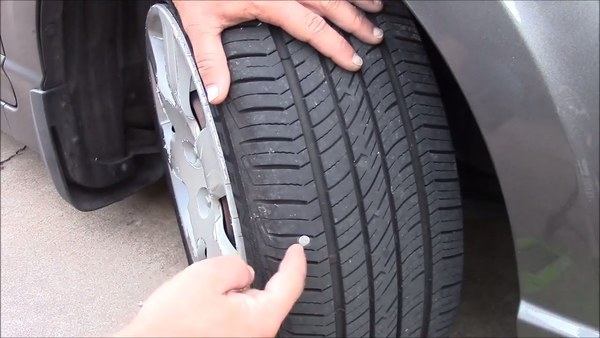 If the puncture is not visible, then you can use water - water the wheel from all sides until you find a "fistula" of air bubbles. After that, it is advisable to mark the hole with something (for example, chalk or a marker).
If the puncture is not visible, then you can use water - water the wheel from all sides until you find a "fistula" of air bubbles. After that, it is advisable to mark the hole with something (for example, chalk or a marker). This method is very simple and also does not take much time, because even with a large puncture of a car tire, having only a few harnesses will help you reach the nearest service station.

This is the easiest tubeless tire repair method and only requires a car pump (which every driver has). The tire sealant itself is sold in cans at any auto chemical store. The bottom line is this: if the tire has been punctured, you need to turn it upside down, unscrew the nipple (although if the sealant is an aerosol type, this is completely optional) and connect a can of activator glue. Under the influence of pressure, the tire will return to its original state, and the glue will clog the breakdown. Of course, this is not a full-fledged tire repair, but it will be enough to get to the tire fitting.
There are other options for repairing car tires, but they require stripping the wheel. For example, it is considered effective to use a patch in the form of a fungus (sold in all car dealerships).
The algorithm of actions is as follows:

This technology is suitable for those who have the skill of stripping wheels. The advantage is that this is a full-fledged tire repair and subsequently you do not have to contact the service station. However, this requires an appropriate tool, which not everyone carries with them daily.
The tire can be retreaded on the road by yourself or in a workshop. It all depends on the degree of damage, the availability of consumables, tools, skills and time for repairs. If you are not confident in your abilities, then it would be best to put a spare tire or call a tow truck.
On the road, you can seal the tire yourself. How to do this (with a tourniquet, sealant or patch) is up to you. However, if the damage is significant, then it is better not to risk and not endanger yourself and other road users.
In a tire shop, quite large punctures and cuts (up to 5 cm in length) of car tires can be repaired.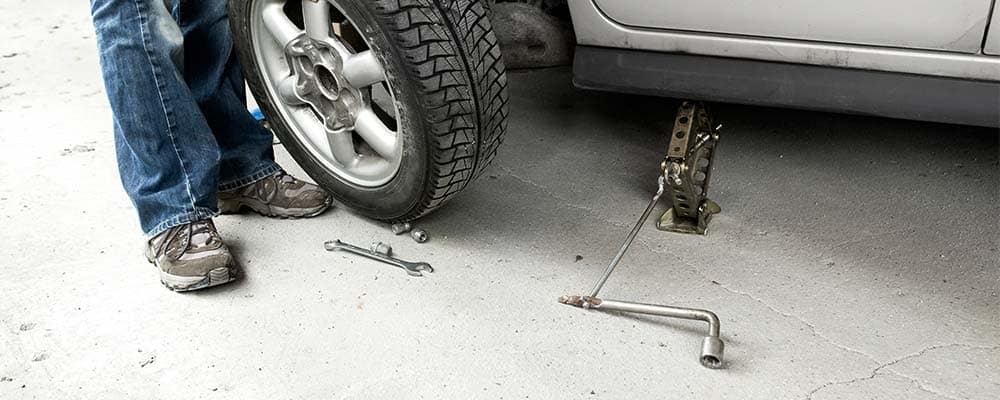 This is done as follows: the area is cleaned, then the rubber around the damage is vulcanized, after which a special patch is installed on the glue, similar in structure to the tire material. However, even with proper repairs (which is far from being observed everywhere), such a tire will not last long. Therefore, a driver who encounters such a problem should take care of purchasing a new wheel in the near future.
This is done as follows: the area is cleaned, then the rubber around the damage is vulcanized, after which a special patch is installed on the glue, similar in structure to the tire material. However, even with proper repairs (which is far from being observed everywhere), such a tire will not last long. Therefore, a driver who encounters such a problem should take care of purchasing a new wheel in the near future.
You can repair punctures or cuts yourself, and such a tubeless tire after repair will practically not lose its driving performance. To do this, use a tourniquet (if you carefully seal it, then tire fitting services will not be required for a very long time) or fill the sample with sealant and drive to the nearest service station. For more information on how to repair a wheel on the road, see the video.
It is also worth buying a suitable tire repair kit and keeping it in the car in case of such “force majeure”.
And don't forget to buy a jack.
Cuts or punctures repaired by vulcanization and thermo-patch under workshop conditions. Such a patch can be applied in two ways:
In this material, several ways were considered how to seal the tire with your own hands.